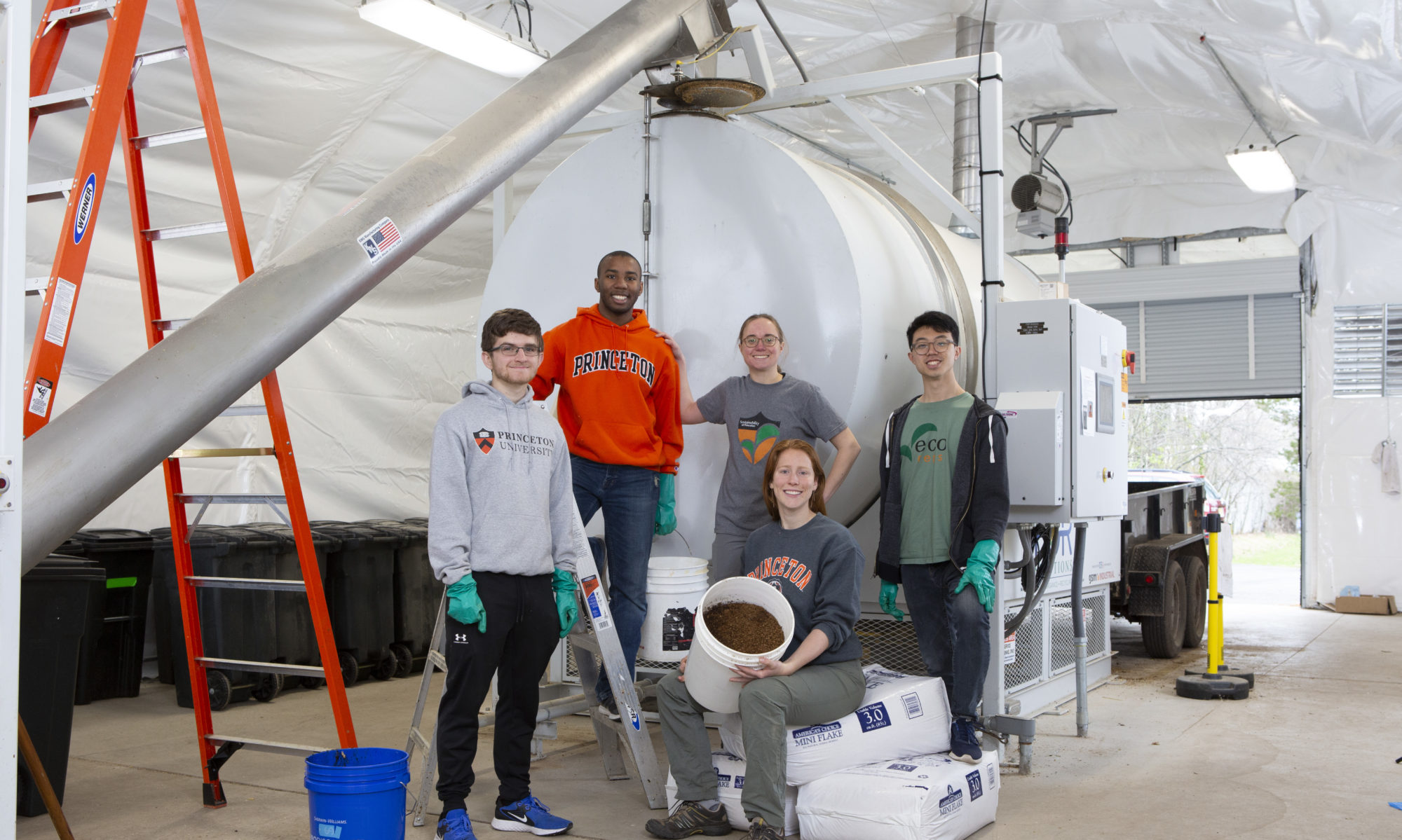In the class ENE202: Designing Sustainable Systems: Demonstrating the Potential of Sustainable Design Thinking taught by Professor Forrest Meggers, students learn about solving the environmental problems facing today’s society with sustainable design principles. For the final course project, students worked on a group design project focused on improving sustainability on campus. In 2018, several students decided to work on projects related to the S.C.R.A.P. Lab and making operations more efficient. The first project was an effort to streamline the process of weighing food waste and using the data to promote awareness about the composter. The second project was an effort to use solar power to heat the S.C.R.A.P. Lab instead of electric heaters.
The first project was called “Hacking the [Composter]” and sought to streamline the process of recording food waste data and create a website that would allow the student body to keep track of the impacts of the program. This project was completed by Thomas Johnson ’19, Max McPherson ’19, and Patrick Brucki ’21 in the Spring of 2018 and was inspired by the idea to allow students to be able to more easily access information about food waste on campus. Though the students were unable to create a process to directly transmit the data from the scale to a spreadsheet due to technical limitations, they were able to collect data from the composter and make many graphics and figures to demonstrate the benefits of the S.C.R.A.P. Lab. An adaptation of their work is shown below.

The second project was called “Solar Air Heater” and sought to create a more sustainable heating system for the S.C.R.A.P. Lab using a solar air heater alongside a photovoltaic panel that would also spread awareness of alternate heating sources throughout the Princeton University community. This project was conducted in the Spring of 2018 by Lena Dubitsky ’18, Oliver Hsu ’19, and Izzy Mangan ’19. This team of students looked into solar air heaters after finding out that the S.C.R.A.P. Lab used electric heaters to keep the temperature inside the tent at least 40 degrees Fahrenheit. Though this temperature is crucial for the composter to function properly and sustain an active microbial population, the team of students noted that the use of electric heaters was inefficient and “was not on a similar level of sustainability” as the rest of the system.

Solar air heaters would be more efficient than electric heaters because they turn solar radiation into heat instead of turning heat into electricity and back to heat. This team of students built a prototype out of plywood, plexiglass, a solar panel, and black spray paint. This prototype was able to change the temperature at an average of 9.6 degrees Celsius which is very promising for the prototype but was not quite ready to be used in the S.C.R.A.P. Lab. The use of solar heating for the S.C.R.A.P. Lab will be investigated further when the facility relocates to Washington Road, but overall this project highlights the potential of integrating renewable energy systems within in-vessel composting operations so that they can be fully self-sufficient and closed-loop systems.


